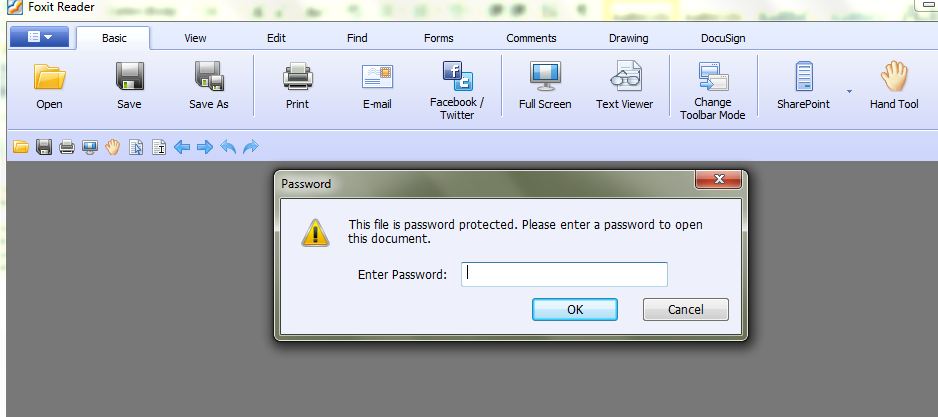

#Password protect pdf file software#
Most PDF software will honor this “code of conduct” however, there are no guarantees (for more details, see the Document Permissions section below).
#Password protect pdf file password#
The permissions integrity is not secured by cryptographic methods, but instead relies on PDF viewers and editors honoring the settings and requiring the entry of the user password before allowing any modifications. Once a document has the owner password set, the document owner can set the document permissions. Then there’s the owner password, which is the password used to define permissions. Once the document is opened with the password, it’s unlocked.

Opening an encrypted document means calculating the encryption key out of the password and using it to decrypt the contents of the document. The user password is the password used to open the document (that’s why sometimes it’s called the open password). The distinction between a user password and an owner password defines the scope of protection. If we set a user password and an owner password, they cannot be the same. We can restrict operations on a file with an owner password. We can apply a user password, which is needed to open a file in the first place. There are two ways we can protect a document with a password: The most robust encryption method is based on 256-bit AES cipher. The way it works is that anyone who knows the password can open a file. Password-based encryption is the most commonly used and most widely supported method for securing PDF documents.

The entire file isn’t necessarily encrypted, but all the sensitive values - like text, form values, and images - are. PDF documents can be encrypted to protect their content from unauthorized access, and encryption applies to the content in the document’s file. All PDF protection relies on encryption using a password, a digital certificate, or a server-based rights management solution. Now in the digital era, especially with document formats like PDF, protecting information is both easy and secure. PDF is a widely adopted document format, having replaced plain sheets of paper with a digital version of paper. Finally, in the 19th century, humans developed the science that allows us to replace simple substitution-based ciphers with complex, math-based encryption. From today’s perspective, the methods people used may come across as childish, but they worked with what they had. Later, ancient Romans began using the Caesar cipher to hide information from outsiders. The earliest known use of obscuring written content is found in non-standard hieroglyphs, circa 1900 BCE. Since the beginning of writing history, people have tried to protect content, ensure its authenticity, and keep it intact.


 0 kommentar(er)
0 kommentar(er)
